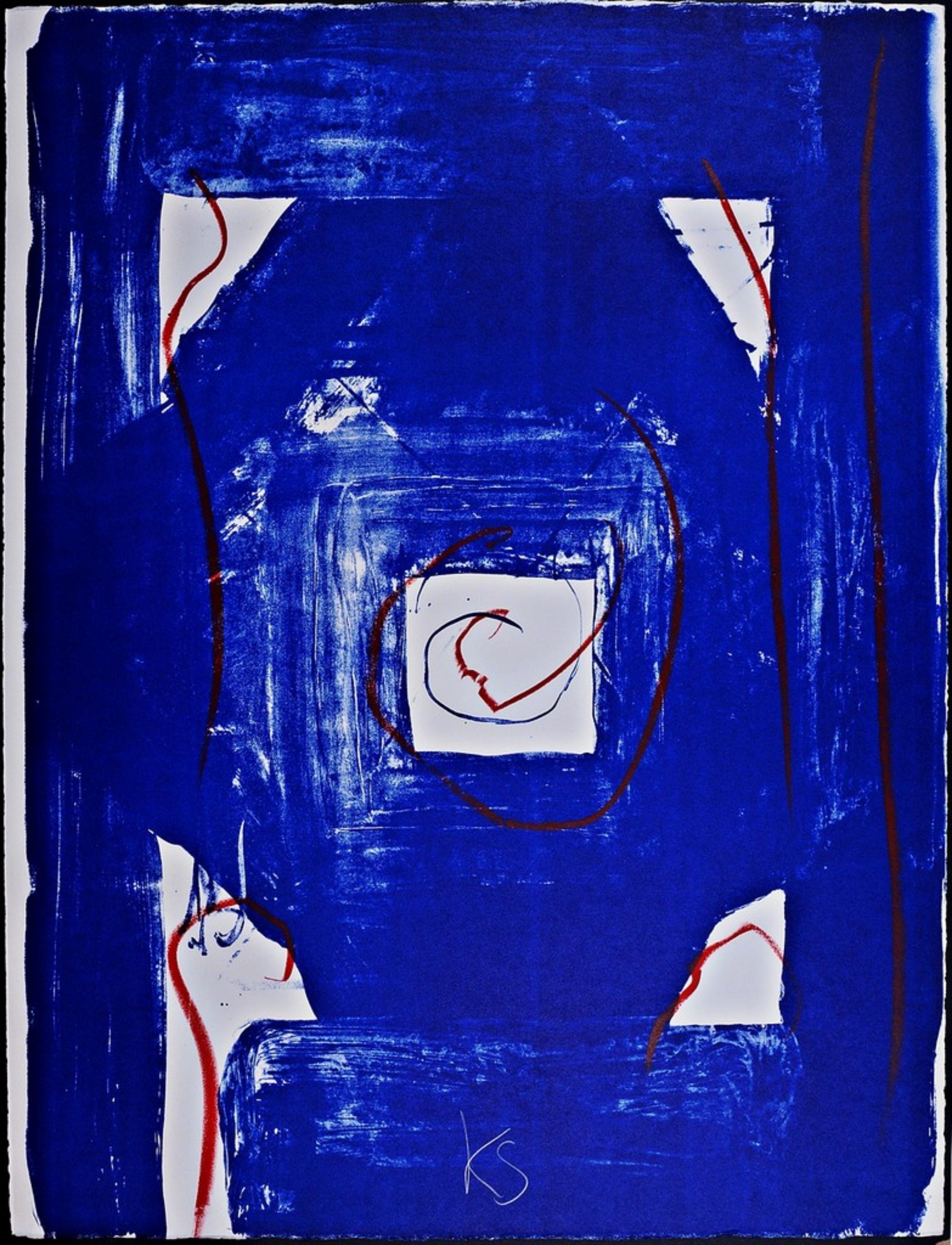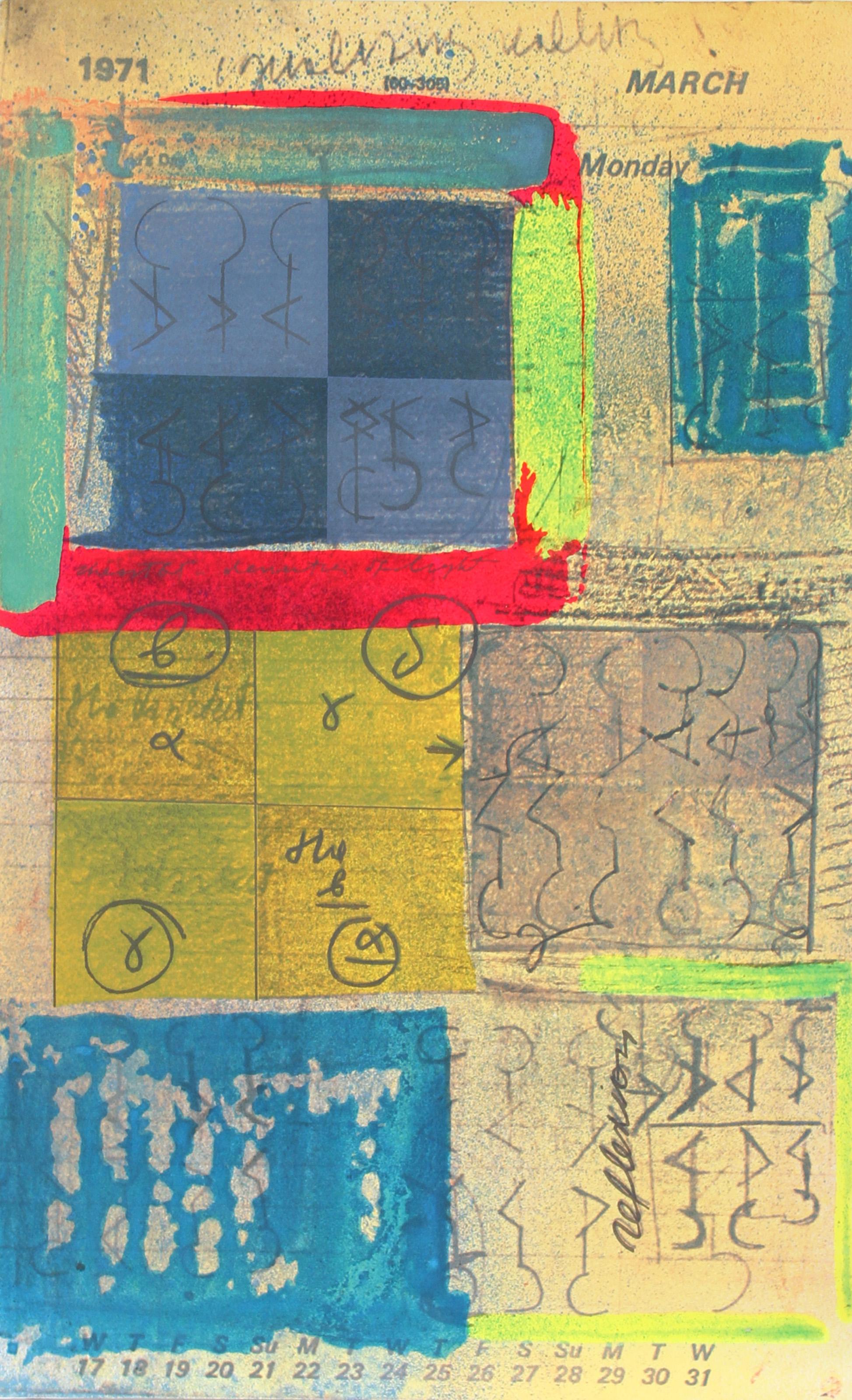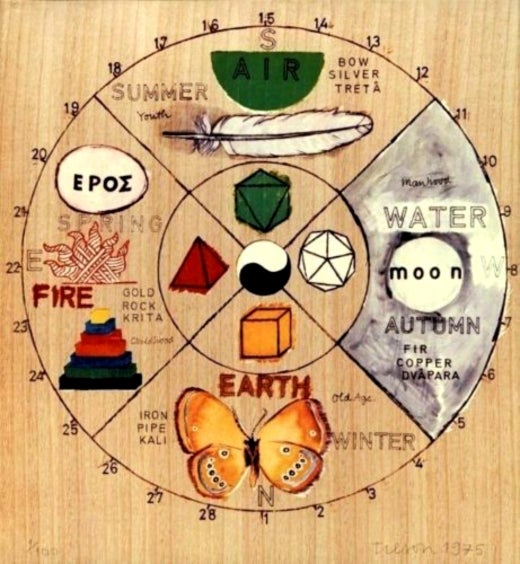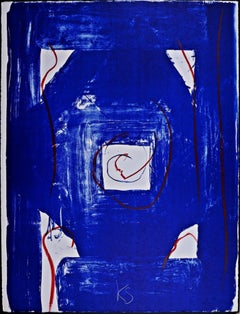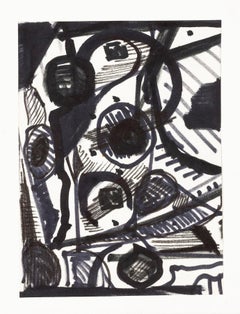Items Similar to Adelphi, Abstract Lithograph on Canvas by Joe Tilson
Want more images or videos?
Request additional images or videos from the seller
1 of 9
Joe TilsonAdelphi, Abstract Lithograph on Canvas by Joe Tilson1980
1980
$3,000
£2,342.62
€2,659.24
CA$4,315.55
A$4,697.94
CHF 2,476.49
MX$56,885.88
NOK 31,222.05
SEK 29,239.96
DKK 19,850.40
About the Item
Artist: Joe Tilson
Title: Adelphi
Year: 1980
Medium: Lithograph and Collage on Canvas, Signed and Numbered in Pencil
Edition: 92/150
Paper Size: 29 x 24.5 inches
- Creator:Joe Tilson (1928, British)
- Creation Year:1980
- Dimensions:Height: 29 in (73.66 cm)Width: 24.5 in (62.23 cm)
- Medium:
- Movement & Style:
- Period:
- Framing:Framing Options Available
- Condition:
- Gallery Location:Long Island City, NY
- Reference Number:1stDibs: LU4661594163
Joe Tilson
Joe Tilson (1928 – Present) Tilson was born on 24th August, 1928 in London, England. Tilson served in the Royal Air Force from 1946 – 49, after which he studied at St Martin’s School of Art (1949-1952) and the Royal College of Art (1952 – 1955). He won the Rome Prize for graduation, taking him to Italy from 1955 - 1957. From 1958 – 1963, Tilson taught at St Martin’s School of Art, the Slade School of Fine Art, University College London and the School of Visual Arts, New York. During the 1960s, Tilson’s artistic career took off as he attracted attention for his unique wooden reliefs and constructions, prints and paintings in the emerging British Pop Art style. He held his first solo exhibition at the Marlborough Galley, London in 1962. In 1977, Tilson joined the Waddington Galleries, exhibited at the Alan Cristea Gallery and the Giò Marconi Galleries in Milan. At the Venice Biennale in 1964, Tilson’s work began to gain international popularity, earning him a retrospective at the Boyman’s Museum, Rotterdam later that year. Growing anti-consumerist feeling in the 1970s pushed Tilson to begin to incorporate a wider variety of materials in his work, including stone, straw and rope to create a timeless feel to his work. This body of work was called Alchera, and was a huge success. Tilson was made a Royal Academician in 2002 which was celebrated with a retrospective exhibition in the same year at the Royal Academy entitled Joe Tilson: Pop to Present. Tilson is collected internationally, including at the Arts Council England, London; the British Library, London; Christchurch College, Oxford; the Ludwig Múzeum, Budapest; the Tate, London; Royal Academy of Arts, London; Scottish National Gallery of Modern Art, Edinburgh; The Royal Collection; Victoria and Albert Museum, London; Museum of Modern Art (MoMA), New York and the Yale Centre for British Art, New Haven
About the Seller
4.9
Platinum Seller
Premium sellers with a 4.7+ rating and 24-hour response times
Established in 1979
1stDibs seller since 2014
3,155 sales on 1stDibs
Typical response time: 1 hour
- ShippingRetrieving quote...Shipping from: Long Island City, NY
- Return Policy
Authenticity Guarantee
In the unlikely event there’s an issue with an item’s authenticity, contact us within 1 year for a full refund. DetailsMoney-Back Guarantee
If your item is not as described, is damaged in transit, or does not arrive, contact us within 7 days for a full refund. Details24-Hour Cancellation
You have a 24-hour grace period in which to reconsider your purchase, with no questions asked.Vetted Professional Sellers
Our world-class sellers must adhere to strict standards for service and quality, maintaining the integrity of our listings.Price-Match Guarantee
If you find that a seller listed the same item for a lower price elsewhere, we’ll match it.Trusted Global Delivery
Our best-in-class carrier network provides specialized shipping options worldwide, including custom delivery.More From This Seller
View AllProscinemi Tyrins, Aquatint Etching by Joe Tilson
By Joe Tilson
Located in Long Island City, NY
Artist: Joe Tilson, British (1924 - )
Title: Proscinemi Tyrins
Year: 1978
Medium: Aquatint Etching with Collage, signed and numbered in pencil
Edition: 4/71
Size: 31.5 x 23 inches
Si...
Category
1970s Contemporary Abstract Prints
Materials
Etching, Aquatint
Proscinemi Dodona Oracle of Zeus, Aquatint Etching by Joe Tilson
By Joe Tilson
Located in Long Island City, NY
Artist: Joe Tilson, British (1924 - )
Title: Proscinemi Dodona, Oracle of Zeus
Year: 1978
Medium: Aquatint Etching with Collage, signed and numbered in pencil
Edition: 71
Image Size:...
Category
1970s Contemporary Abstract Prints
Materials
Etching, Aquatint
Drifter Plus #1, Abstract Conceptual Lithograph by Glenn Goldberg
By Glenn Goldberg
Located in Long Island City, NY
Artist: Glenn Goldberg, American (1953 - )
Title: Drifter Plus #1
Year: 1989
Medium: Lithograph, signed and numbered in pencil
Edition: 11/35
Size: 26 x 19.5 in. (66.04 x 49.53 cm)
Category
1980s Conceptual Abstract Prints
Materials
Lithograph
When Something is a Picture, Abstract Mixed Media Screenprint by Steven Sorman
By Steven Sorman
Located in Long Island City, NY
Artist: Steven Sorman, American (1948 - )
Title: When Something is a Picture
Year: 1980
Medium: Mixed Media Collage with Fabric, Screenprint, and Glitter, signed and numbered in penc...
Category
1980s Contemporary Mixed Media
Materials
Fabric, Glitter, Mixed Media, Screen
Untitled 7 - Conceptual Art Screenprint by Chryssa
By Chryssa Vardea-Mavromichali
Located in Long Island City, NY
Untitled 7
Chryssa, Greek (1933–2013)
Date: circa 1975
Screenprint
Size: 33 in. x 20 in. (83.82 cm x 50.8 cm)
Category
1970s Abstract Geometric Abstract Prints
Materials
Screen
Final Hours, Abstract Lithograph by Gregory Amenoff
By Gregory Amenoff
Located in Long Island City, NY
Artist: Gregory Amenoff, American (1948 - )
Title: Final Hours
Year: 1986
Medium: Lithograph, Signed and numbered in Pencil
Edition: 40
Paper Size: 37 x 38 inches (93.98 x 96.52 cm)
Category
1980s Abstract Abstract Prints
Materials
Lithograph
You May Also Like
Kimber Smith, Abstract Expressionist Geometric Abstraction signed/n lithograph
By Kimber Smith
Located in New York, NY
KIMBER SMITH
Untitled Abstract Expressionist Geometric Abstraction, 1967
Lithograph on Rives paper
25 × 19 3/5 inches
Signed in silver...
Category
1960s Abstract Geometric Abstract Prints
Materials
Lithograph
Untitled II
By Joseph Zirker
Located in San Francisco, CA
Artist: Joseph Zirker (American, born 1924)
Title: Untitled
Year: 1988
Medium: Color monotype
Paper: Arche 88
Size: 42 x 30 inches
Signature: Signed and dated in pencil by the artist
Printer: The artist
Condition: Very good
Frame: Unframed
About the artist.
Joseph Zirker is a noted American modern artist, educator, lecturer that was born on August 13, 1924 in Los Angeles, California, United States. As a young man he Served with United States Navy, from 1944 to 1946.
He attended the University of California in Los Angeles 1946—1947. He got a bachelor of Fine Arts at the University of Denver in 1949 and a master of Fine Arts, University Southern California, 1951.
He was a printer and research fellow at Tamarind Lithography Workshop in Los Angeles, 1961—1963. Lecturer University Southern California, 1963. Instructor Los Angeles County Art Institute, 1964, San Jose City College, California, 1966—1980.
Lecturer Stanford University, 1981—1983, 1986—1990. All along his carer, he had numerous acclaimed shows in the U.S and abroad. He is known worldwide as an innovator in monotype and printmaking. His works are represented in private and public collections, both in the USA and worldwide, including:
Grunwald Collection, U.C.L.A., Los Angeles, California,
Brooklyn Museum, Brooklyn, New York
Free Library of Philadelphia, Pennsylvania
June Wayne, Tamarind Lithography Workshop, Los Angeles, California
Tamarind Archives, Tamarind Lithography Workshop, Los Angeles, California,
Charles White, Los Angeles, California
Stanley Freeman Collection, Los Angeles County Museum, Los Angeles, California
Ben Smith...
Category
Late 20th Century American Modern Abstract Prints
Materials
Monotype
Untitled III
By Joseph Zirker
Located in San Francisco, CA
Artist: Joseph Zirker (American, born 1924)
Title: Untitled
Year: 1988
Medium: Color monotype
Paper: Arche 88
Size: 42 x 30 inches
Signature: Signed and dated in pencil by the artist
Printer: The artist
Condition: Very good
Frame: Unframed
About the artist.
Joseph Zirker is a noted American modern artist, educator, lecturer that was born on August 13, 1924 in Los Angeles, California, United States. As a young man he Served with United States Navy, from 1944 to 1946.
He attended the University of California in Los Angeles 1946—1947. He got a bachelor of Fine Arts at the University of Denver in 1949 and a master of Fine Arts, University Southern California, 1951.
He was a printer and research fellow at Tamarind Lithography Workshop in Los Angeles, 1961—1963. Lecturer University Southern California, 1963. Instructor Los Angeles County Art Institute, 1964, San Jose City College, California, 1966—1980.
Lecturer Stanford University, 1981—1983, 1986—1990. All along his carer, he had numerous acclaimed shows in the U.S and abroad. He is known worldwide as an innovator in monotype and printmaking. His works are represented in private and public collections, both in the USA and worldwide, including:
Grunwald Collection, U.C.L.A., Los Angeles, California,
Brooklyn Museum, Brooklyn, New York
Free Library of Philadelphia, Pennsylvania
June Wayne, Tamarind Lithography Workshop, Los Angeles, California
Tamarind Archives, Tamarind Lithography Workshop, Los Angeles, California,
Charles White, Los Angeles, California
Stanley Freeman Collection, Los Angeles County Museum, Los Angeles, California
Ben Smith...
Category
Late 20th Century American Modern Abstract Prints
Materials
Monotype
Abstract Composition - Lithograph by J. Mailhe - 1967
Located in Roma, IT
Abstract is an original lithograph on paper by Jean Mailhe (born1912), realized in 1967 as cover for the invitation to Mailhe's vernissage organized by "L'...
Category
1960s Abstract Abstract Prints
Materials
Lithograph
Composition, X + X, Ten Works by Ten Painters, George Earl Ortman
By George Earl Ortman
Located in Southampton, NY
Silkscreen on Mohawk Superfine Bristol paper. Inscription: unsigned and unnumbered, as issued. Good condition. Notes: From the folio, X + X, Ten Works by Ten Painters, 1964. Publishe...
Category
1960s Pop Art Landscape Prints
Materials
Screen
$1,996 Sale Price
20% Off
Free Shipping
Untitled 148
By Gino Scarpa
Located in Austin, TX
Artist: Gino Scarpa, Italian/Norwegian (1924 - )
Title: Untitled 148
Year: circa 1970
Medium: Aquatint Etching and Carborundum Intaglio print
Signed and numbered in pencil, Numbe...
Category
1970s Abstract Expressionist Abstract Prints
Materials
Etching, Aquatint, Intaglio
$385 Sale Price
65% Off
Read More
Romare Bearden’s Humanity Infuses His Bright, Bold Art
Through collage, painting and printmaking, the artist foregrounded Black life in America in revolutionary new ways.
Chryssa’s 1962 Neon Sculpture Was Way ahead of the Art-World Curve
By working with lettering, neon and Pop imagery, Chryssa pioneered several postmodern themes at a time when most male artists detested commercial mediums.
More Ways To Browse
Art Poster Helen Frankenthaler
Banksy Welcome Mat
Calder Ea
Calder Flowers
Calder Lithograph Balloons
Calder Lithograph Pyramids
Calder Mcgovern
Calder Pyramid Prints
Carlo Scarpa Print
Catherine Peet
Chandler Pastel
Chateau De Culan
Chihuly Lithograph
Christopher Wool Poster
Dali Amour Jaune
Dali Les Amours Jaunes
Donald Judd Aquatint
Enrique Carbajal Sebastian
